When it comes to heralding the arrival of spring, cherry blossoms get all the glory. But the hardier and more modest plum blossoms are just as pretty and smell twice as nice.
The season begins in February, so you’ll still have to bundle up to go see them, but you’ll at least know winter is on its way out. Here are 10 of the best places to see plum blossoms in Japan:
10. Kairakuen (Ibaraki)
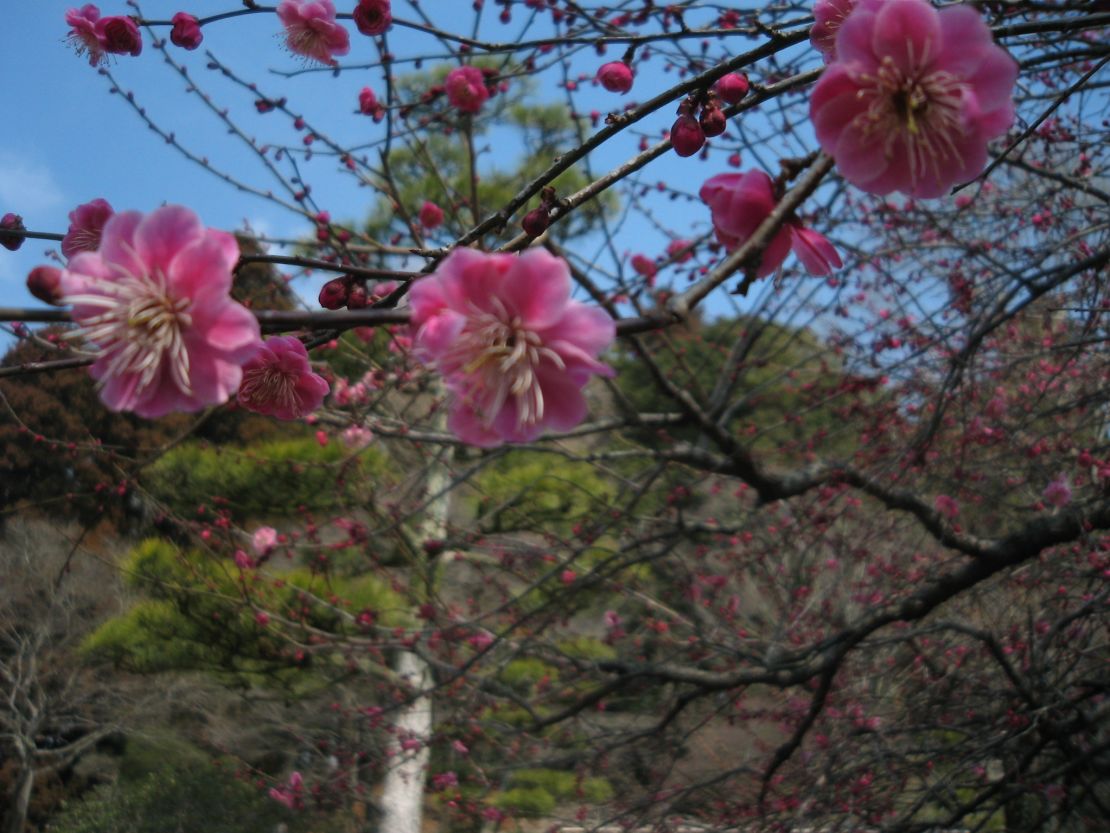
You’ll have to head out of town to see this one in Ibaraki, but spending an hour on the train is worth it to see one of the biggest plum festivals around.
Even on a regular day, this park is considered one of the three most beautiful landscape gardens in Japan, but throw in thousands of plum trees in a hundred different varieties and it’s really something to see.
Their plum festival is held annually from late February through March, so you really have no excuse not to check it out.
To get there: Mito station from JR Joban line, 15 minutes by bus from Mito station.
Where to view cherry blossoms in Japan
9. Koishikawa Korakuen

Koishikawa Korakuen has the distinction of being one of the oldest landscape gardens in Tokyo, dating back to the early Edo period.
It’s well-known for a massive weeping cherry tree near the entrance, but it also has a grove of plum trees that bloom in particularly vibrant colors.
This site also makes for great people watching, as the picturesque scenery and blossoms bring Tokyo’s shutterbugs out in droves.
To get there: Lidabashi-station from JR Sobu line, eight-minute walk.
8. Kyu Shiba Rikyu
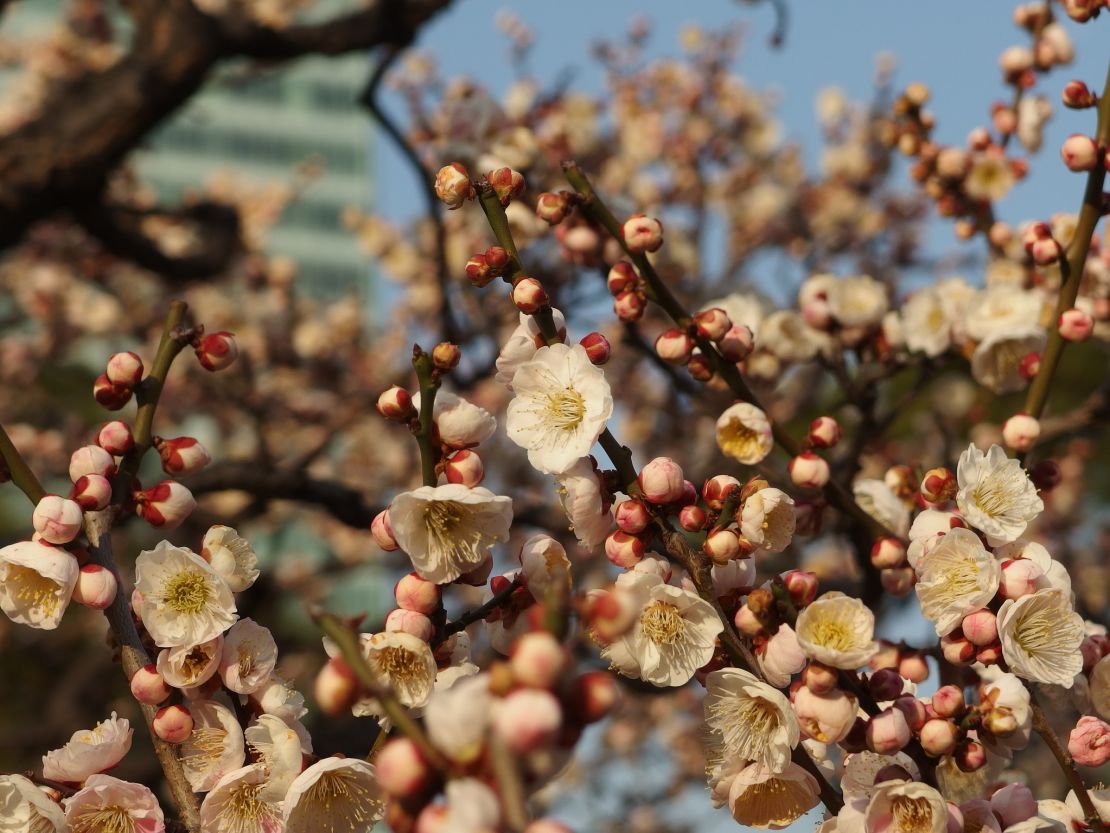
Kyu Shiba Rikyu is another traditional garden, but unlike Koishikawa Korakuen, whose walls and sloped hills let you forget the metropolis outside, Kyu Shiba juxtaposes the surrounding modern highrises of Hamamatsucho with the historic elements of the Oriental garden.
Visually, you never quite forget you are in the center of a sprawling city, even surrounded by delicate white and pink flowers and a sprawling koi pond.
Somehow, nothing says Tokyo quite so well as the mix of old and new, natural and constructed.
And if you go early in the season, you’ll also catch their rare jugatsuzakura, or winter cherry tree, in bloom too.
To get there: Daimon station from Oedo subway line, three-minute walk.
7. Hanegi Park
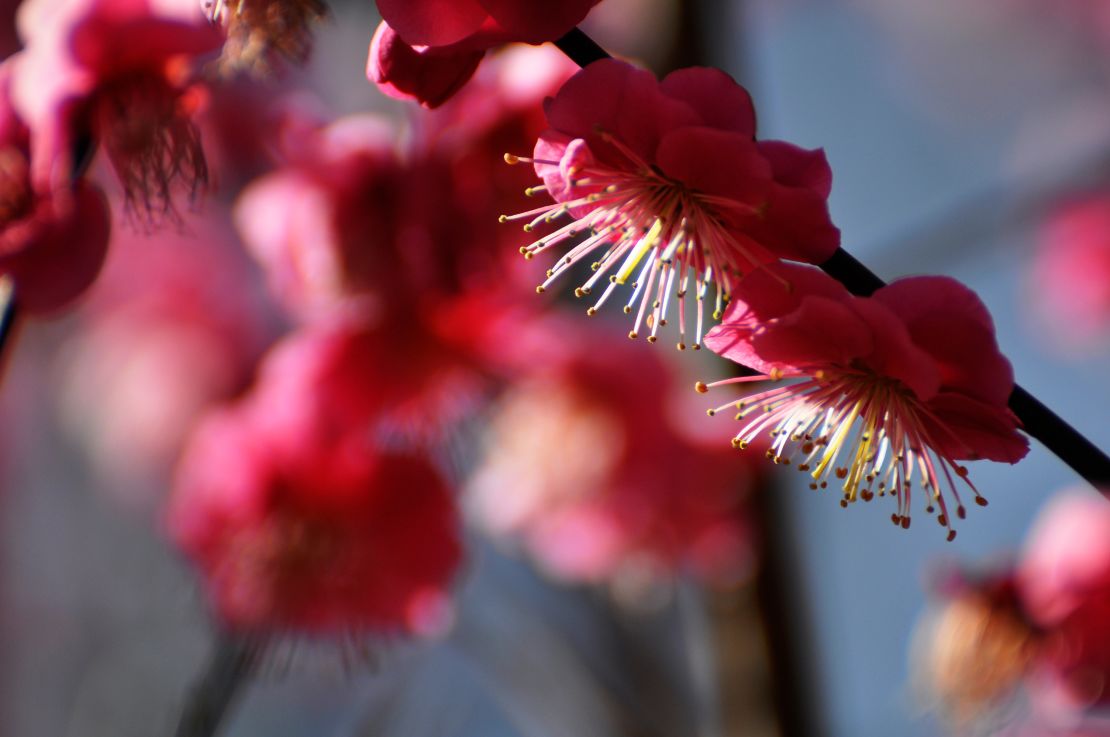
In February in the aptly named Umegaoka, you can find hordes of blossom hunters converging on Hanegi Park.
The park boasts about 700 plum trees, perfuming the air for blocks around.
Setagaya’s Ume Matsuri is held here on weekends and holidays in February, and with the food vendors and crowds, the atmosphere is as festive as any hanami party, particularly when the weather is mild.
To get there: Odakyu line, Umegaoka station, five-minute walk.
Why Kyoto could be the world’s most photogenic city
6. Yushima Tenjin

Yushima Tenjin is a shrine that holds a special place in the hearts of university applicants.
It’s associated with the spirit of learning, so every year students come to pray for success in their college entrance exams.
The shrine also has a small garden of plum trees and holds an annual plum festival from February 8 to March 8.
During that period, there are various events on the weekends, such as singing contests and tea ceremonies, as well as displays of impossibly small, bonsaied plum trees.
To get there: Tokyo Metro Chiyoda line, Yushima station, two-minute walk.
5. Baji Koen
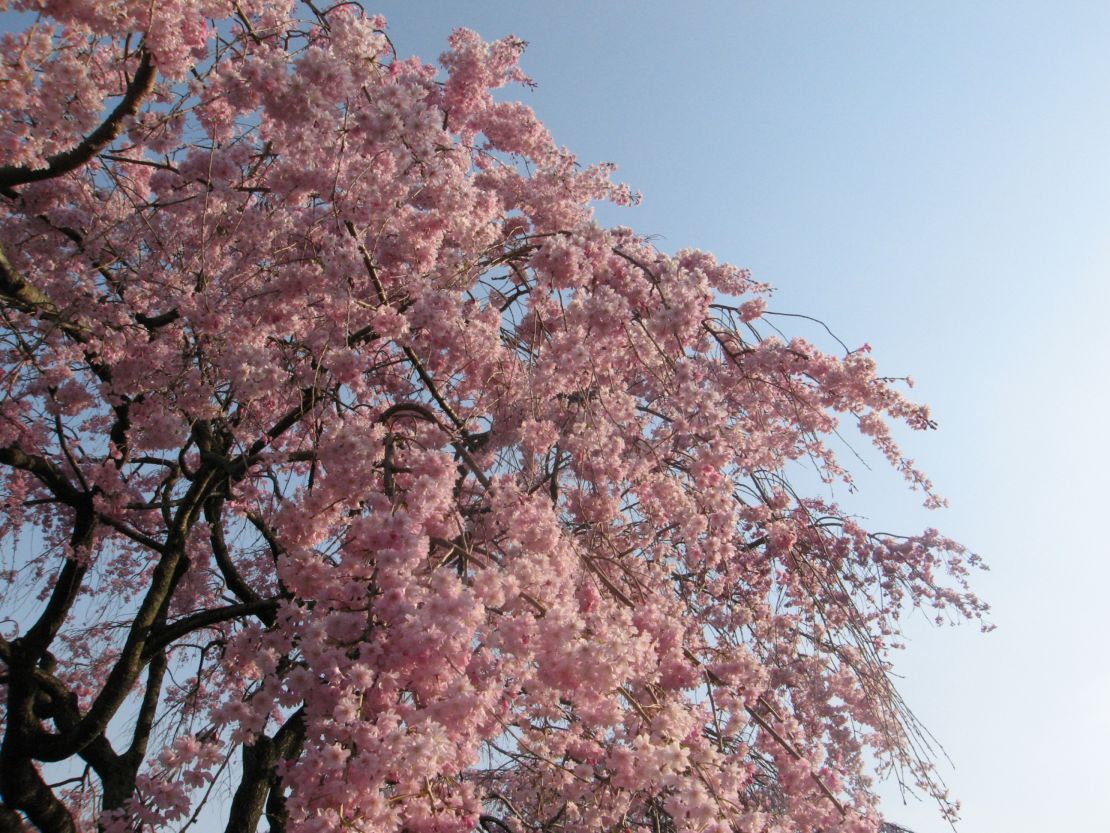
Baji Koen, or horse park, was built for the equestrian events in the 1964 Olympics and is now run by the Japan Racing Association.
It is rightly known as a place to see cherry blossoms in the spring, but they have also have a lovely plum grove surrounding one of their seven playgrounds.
Plus horses, of course. As you can imagine, this one is popular with the kiddies.
If you have little ones who might be a little too rambunctious for staid landscape gardens, this is a perfect place to enjoy your flower gazing while keeping the kids entertained.
To get there: JR Shibuya station, Tokyu bus bound for Soshigaya-Okura station, get off at Nodai-mae station, three-minute walk.
4. Odawara Ume Matsuri
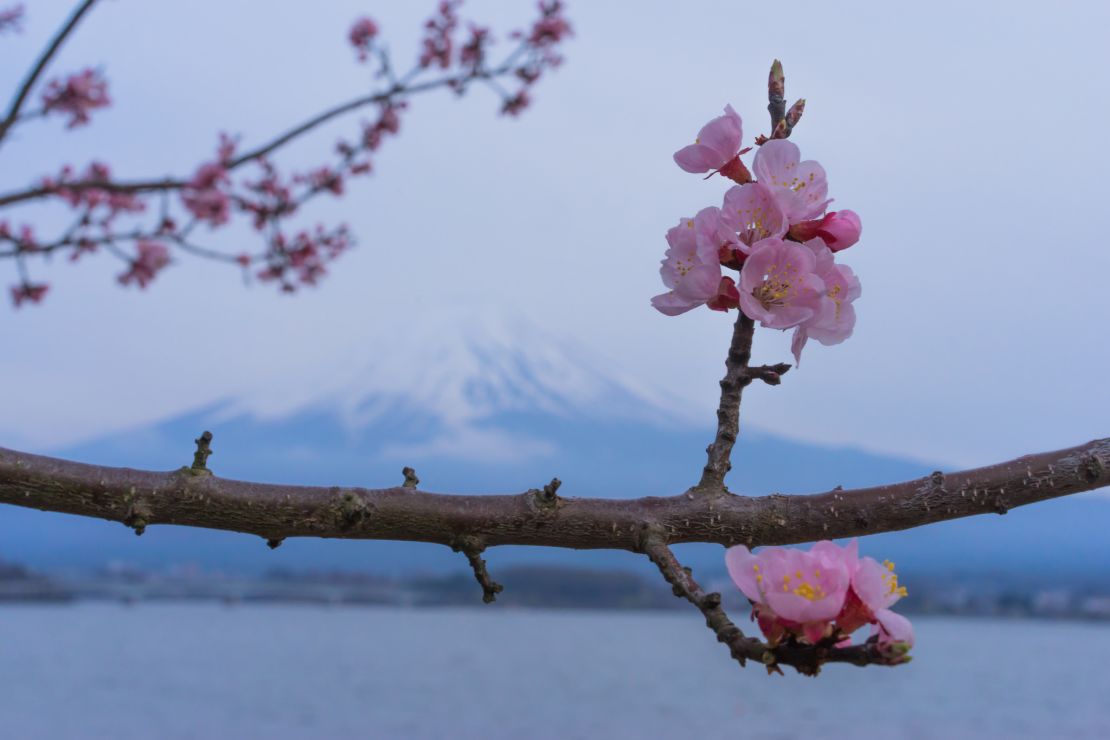
OK, combine views of Mt. Fuji with 35,000 white plum trees, and that’s enough to make a trip to Odawara worth it, right?
Not to mention all kinds of live performances, from oversize calligraphy to horseback archery. The city’s plum festival is already under way and will be going on until February 28. And don’t forget your camera, because their popular photography contest has been brought back this year.
To get there: JR Shimosoga station, 15-minute walk.
Japan’s 34 most beautiful places
3. Ushi Tenjin
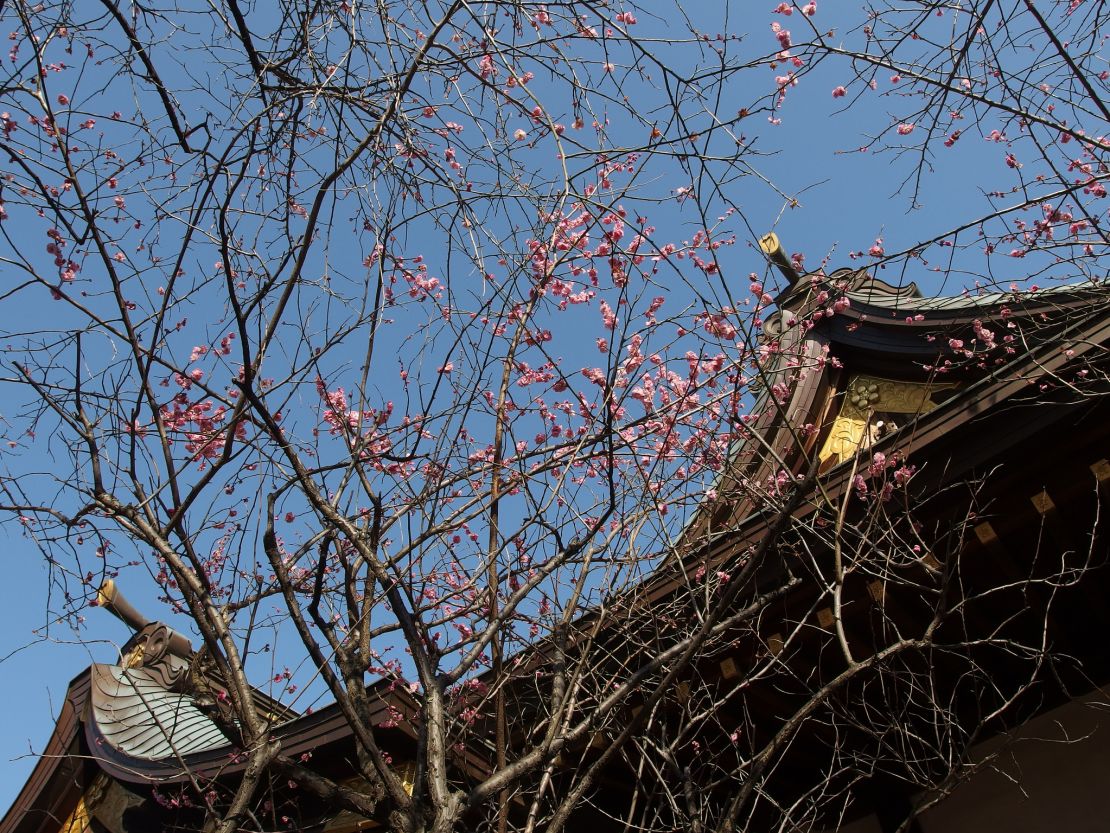
Ushi Tenjin’s ume matsuri particularly celebrates the red variety of plum blossoms, which look striking against the background of the shrine buildings, but if you’d rather eat plums than look at them, this festival is for you.
On Saturdays and Sundays in February, all kinds of goodies are on offer, including plum fruits grown on the grounds, sweets made from them, and plum liquor. Ginger tea and amazake can also be had if you get tired of plums. And on Sunday February 13, 200 lucky patrons are allowed to take home a branch of blooming red plum blossoms.
To get there: Korakuen station from Marunouchi or Namboku subway line, 10-minute walk.
2. Fuchu-shi Kyodo no Mori
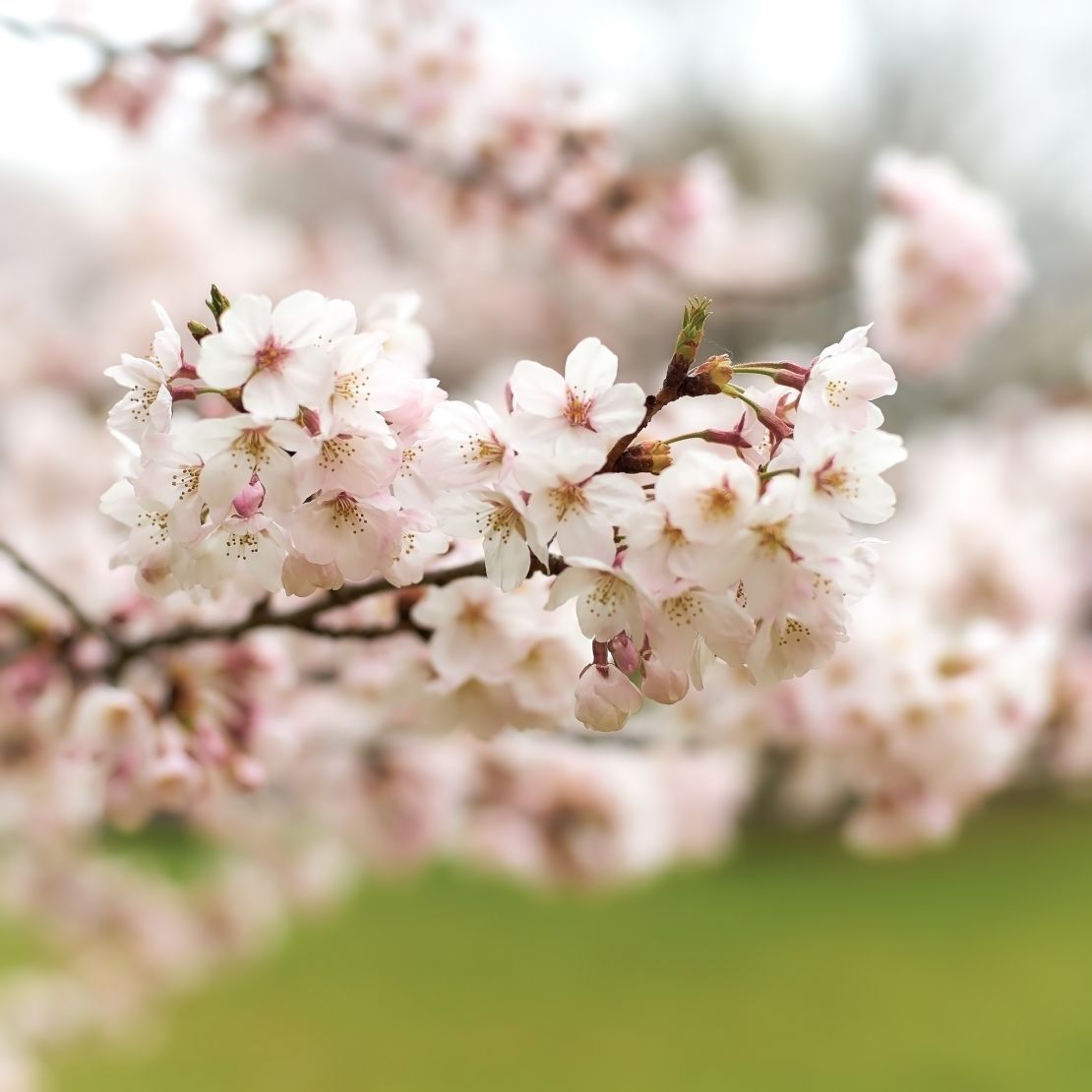
Fuchu-shi Kyodo no Mori puts a decidedly traditionalist spin on the ume matsuri, which started on the first of February.
In addition to strolling through the garden enjoying the sight and smell of white and red plum blossoms, visitors have a chance to take part in open air tea ceremonies, to hear performances of traditional musical instruments like the koto, and to drink kuzuyu, a hot sweet beverage made from kudzu starch.
And if that isn’t enough to tempt you, daffodils and pheasant’s eye will also be in bloom.
To get there: Fuchu-Honcho station from JR Musashino or Nanbu line, 20-minute walk.
The world’s most beautiful floral hotels
1. Ome-shi Plum Park
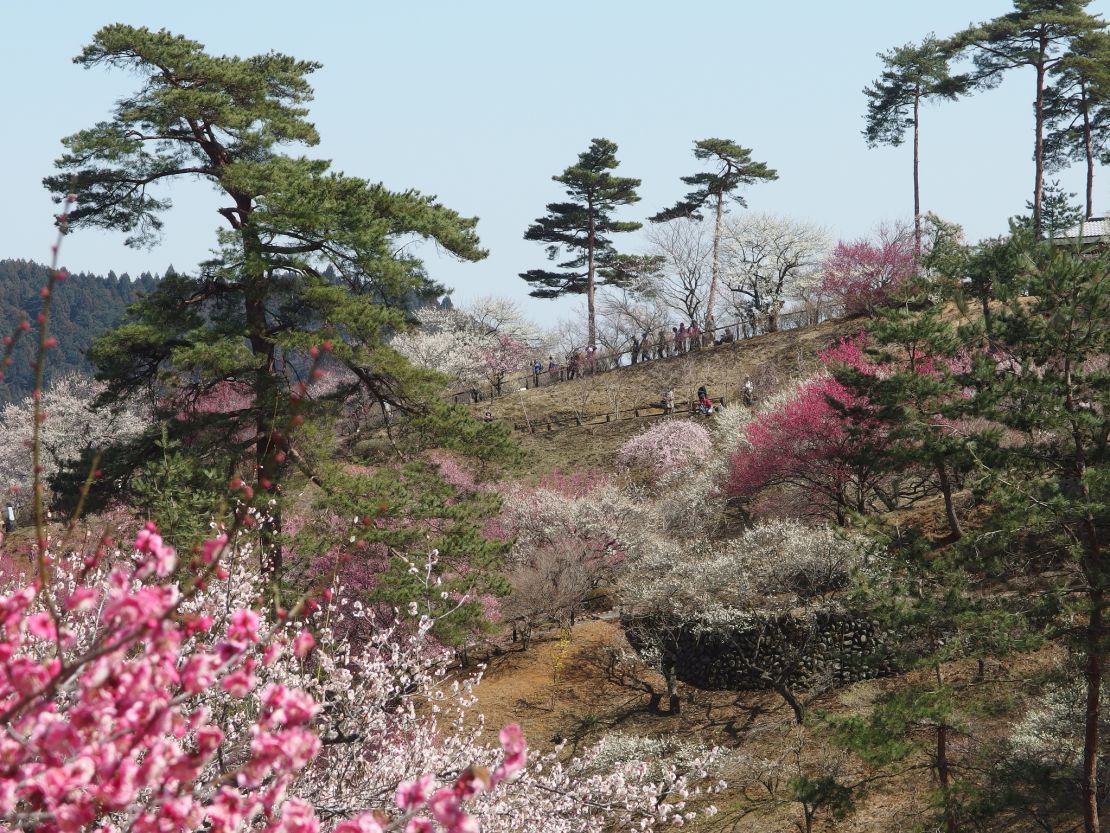
This one is also a little ways out of town, but Ome-shi’s plum groves are truly a sight to see. The 1,500 trees that cover the sloping hills of the park make it look like mounds of cotton candy. There is also a 300-year-old plum tree to make you feel insignificant in the face of nature.
The park’s festival lasts from the end of February to the end of March. For those who want to do a little exploring as long as you are out there, you might want to check out JR’s Holiday Pass to save a few bucks on train fare.
To get there: Ome station from JR Ome line, Tokyo metropolitan bus bound for Yoishino, get off at Yoshino-Bairin station, three-minute walk.
Editor’s note: This article was previously published in 2011. It was reformatted and republished in 2017.

